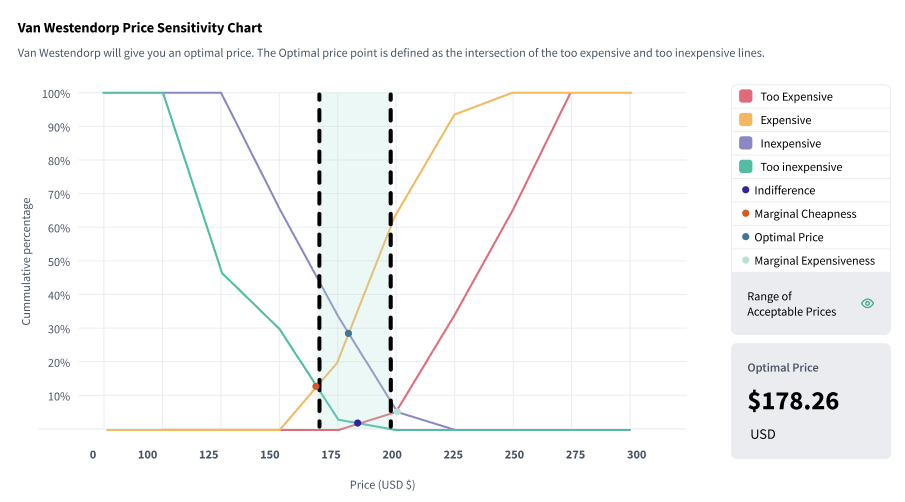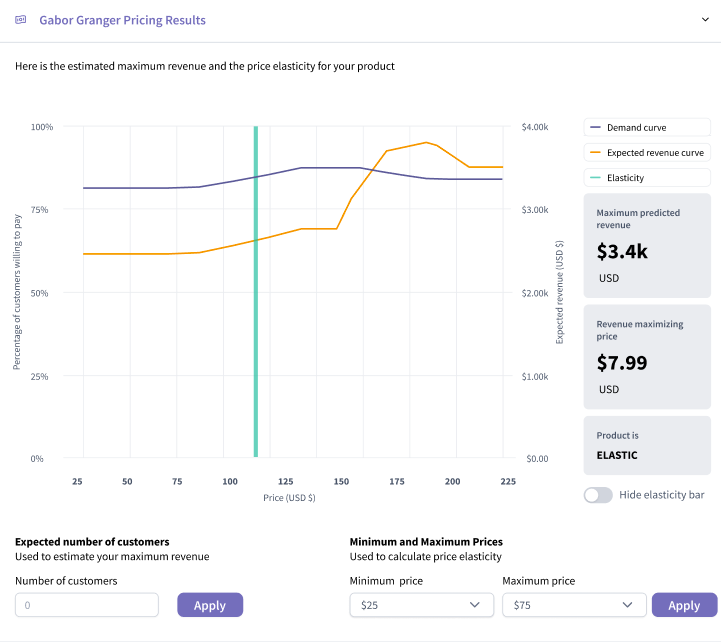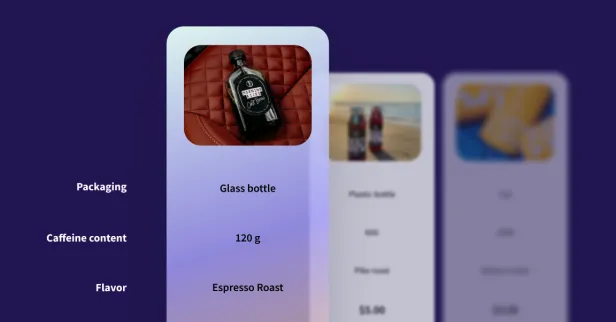Your pricing is nothing to take lightly. Like it or not, the number you choose sends signals about your product quality and brand's status to potential customers.
If you want to find that pricing sweet spot for your product, you'll have to better understand what the market is willing to pay and how consumers perceive different price points when attached to your product.
In this blog, we're diving into pricing research, unraveling its significance and introducing you to the indispensable tools that can make or break your pricing strategy:
What is Pricing Research?
Pricing research is a type of market research that allows you to find out what people are willing to pay for your offering. While there are a few different types of pricing studies to choose from, the goal is to understand the price sensitivity in your market, explore new pricing strategies, and investigate the relationship between price and demand for your offering.
Pricing Research Methods
Van Westendorp
If you are looking for a simple and quick study that will give you a lower threshold, upper threshold, and optimal price point for your offering, Van Westendorp is your test.
It accomplishes this by asking respondents four core questions:
![]() At what price would you begin to consider the product so inexpensive that you would question the quality and not purchase it?
At what price would you begin to consider the product so inexpensive that you would question the quality and not purchase it? ![]() At what point would you think the product to be a bargain?
At what point would you think the product to be a bargain? ![]() At what price would you say this product is starting to become expensive- to the point that you’d have to give some thought to buying it?
At what price would you say this product is starting to become expensive- to the point that you’d have to give some thought to buying it? ![]() At what price point would you consider the product to be so expensive that you wouldn’t consider buying it?
At what price point would you consider the product to be so expensive that you wouldn’t consider buying it?
While the questions themselves are quite simple, the output is powerful and will reveal a range of acceptable prices for your product.
This range is end-capped by the point of marginal cheapness (PMC) on the left and the point of marginal expensiveness (PME) on the right. If you price your offering any lower than the PMC, shoppers would likely find your product too cheap and question the quality. Similarly, any price above the PME would be considered too expensive for most of your market.
But that’s not all it will show you.
Directly in the center, you will see the intersection of the “too cheap” and “too expensive” lines. This is your optimal price point. What makes it optimal? It minimizes the number of people who are dissatisfied with your price one way or the other.

If you want to learn more about this pricing methodology, check out this explainer.
Gabor-Granger
Gabor-Granger is a great choice if you already have a defined price range, but need to pinpoint an exact price that will maximize your revenue without compromising consumer demand.
It accomplishes this by giving respondents a series of nearly identical questions, the base of which being: “Would you buy [PRODUCT] for $[PRICE]?”
Once the first question is posed to respondents, the subsequent questions are adapted to their answers. Presenting respondents with higher prices, until they indicate a lack of purchase intent. Ultimately, these questions are designed to determine the highest price a consumer is willing to pay.
Based on the responses, a demand curve is generated, showing the relationship between price and demand and highlighting an optimal price point that maximizes revenue. Showing you exactly how fluctuations in your pricing will affect demand for your product.

To learn more about Gabor-Granger, see the full guide here.
Automated Conjoint Analysis
If you are interested in learning not only about price but also the optimal combination of product attributes to pair with it, we would recommend a conjoint analysis.
Conjoint analysis helps to identify the rules consumers explicitly (and implicitly) use to make their purchasing decisions. The premise of this technique is fairly simple. Consumers conduct mental trade-offs between pricing and other factors like quality, functionality, style, etc.
For this type of research, you expose consumers to multiple product components shown in various combinations, each with different pricing. Once the data is collected, the subsequent analysis will show you what features consumers value the most and the price(s) they are willing to pay for them. Ultimately allowing you to not only choose the right price, but the right features to pair with it.
What are the Benefits of Conducting Pricing Studies?
When done correctly, the ROI of pricing research is massive. The insights can help you in any number of ways, by enabling you to:
_Size=sm)_Color=Success.png) Find a price that maximizes your revenue without compromising demand.
Find a price that maximizes your revenue without compromising demand.
_Size=sm)_Color=Success.png) Uncover the upper and lower threshold prices that consumers are willing to pay.
Uncover the upper and lower threshold prices that consumers are willing to pay.
_Size=sm)_Color=Success.png) Use your ideal price point and number of expected customers to predict revenue.
Use your ideal price point and number of expected customers to predict revenue.
Ultimately, the insights you take away from pricing studies will let you to better understand your market's willingness to purchase and the prices they consider acceptable, guiding your strategy.
Pricing Research with SightX
If you're ready to maximize your revenue, we've got the tools to make it happen! The SightX platform is the only tool you'll ever need for pricing research:: a single, unified solution for consumer engagement, data collection, advanced analysis, and reporting. While powerful enough for insights teams at Fortune 500 companies, the user-friendly interface makes it simple for anyone to start, optimize, and scale their research.
And with our Generative AI consultant, Ada, you can harness the power of OpenAI’s GPT to transform your marketing research and insights. Collaborating with Ada is like having an expert researcher, brilliant statistician, and ace marketer on your team, helping you ask the right questions, choose the best experiments, pick out key insights, and seamlessly apply them to your business.
If you're ready to dive in click the button below to get started for free!
